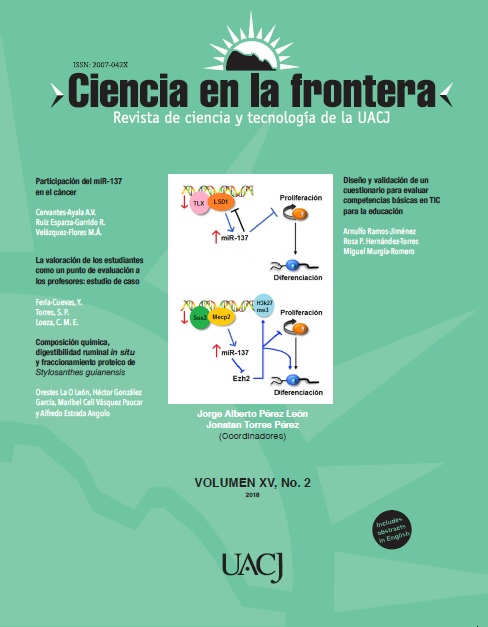Participación del miR-137 en el cáncer
MicroRNAs are small RNAs (18-100 nucleotides), which regulate the expression of their target genes at the post-transcriptional level; however, miRNAs have been detected at the nuclear level. MicroRNA hsa-mirR-137 is located within its host gene MIR137HG, in the locus 1p21.3, and regulates genes invo...
Saved in:
| Main Authors: | , , |
|---|---|
| Format: | Artículo |
| Language: | spa |
| Published: |
Ciencia en la frontera
2018
|
| Subjects: | |
| Online Access: | http://erevistas.uacj.mx/ojs/index.php/cienciafrontera/article/view/2571 |
| Tags: |
Add Tag
No Tags, Be the first to tag this record!
|
| Summary: | MicroRNAs are small RNAs (18-100 nucleotides), which regulate the expression of their target genes at the post-transcriptional level; however, miRNAs have been detected at the nuclear level. MicroRNA hsa-mirR-137 is located within its host gene MIR137HG, in the locus 1p21.3, and regulates genes involved in cell proliferation and cell differentiation. This microRNA participates on the neurogenesis by suppressing the proliferation of neural stem cells and by promoting their differentiation. Because of these crucial functions, its participation has been focussed on the study of different neurological diseases and in cancer, where it functions as tumoral suppressor (nervous system tumors, melanoma, gastric and lung cancer, oral carcinoma, osteosarcoma, ovarian and breast cancer) or oncogene (bladder and breast cancer). According to these studies, miR-137 could function as a biomarker for diagnosis and prognosis, and as therapeutic target in many types of cancer; however, more studies are needed to establish these. |
|---|---|
| ISSN: | 2007-042X |
